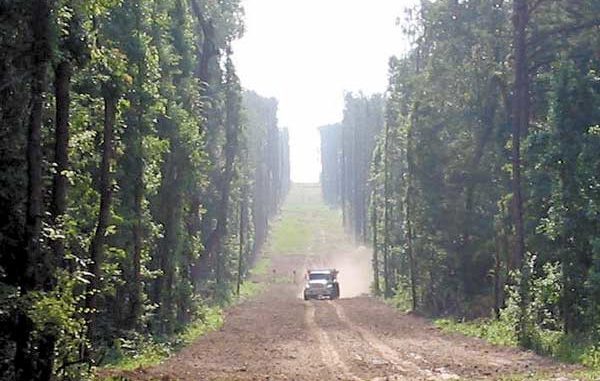
As the change of seasons approaches throughout the northern hemisphere, nature’s crops of acorns, beech nuts, muscadine grapes, and persimmons are available for deer to eat in most areas, but in a little while, they will quickly be consumed.
As most wildlife species are forced to go on “search and rescue missions” to find enough food to make it through winter, properly-prepared food plots are a solution to their problems, and they create a mecca for the deer hunter.
As southeastern land cover is dominated by agriculture and timber production, most game species have easily adapted, especially in areas where soybeans, peanuts and corn are grown. The quantity and quality of agriculture crops is very appealing to deer and other wildlife. Groups of animals will move from great distances to stock up on energy-rich crops.
Food plots are nothing more than agricultural fields planted with wildlife in mind. However, discing a field, spreading seed and covering with soil are only part of the food-plot equation — not the entire solution. Avoiding some common mistakes can make the difference between a delectable crop regularly frequented by many deer — and a pile of weeds.
According to Carolinas Wildlife Systems (CWS), developing a successful food plot is no more than farming, plain and simple. CWS (843-992-0691) distributes Plotmaster equipment in the Carolinas and provides wildlife-consulting services to landowners and hunting clubs, especially in the preparation and management of food plots.
Farming has been around for more than 10,000 years. Thousands of years of experience, paired with 21st-century technology, has helped today’s farmers know how to grow a crop. According to CWS, do not worry about enrolling at Clemson and obtaining a doctorate in soil chemistry, fertilization, chemical use or meteorology to be successful; anybody can grow a rich food plot by avoiding a few mistakes.
Baseline and foundation construction
All crops have needs, and many have species-specific needs. Having the proper pH and chemical composition is an absolute must and is the most important factor in establishing a food plot. Without the right nutrients and a pH-balanced environment, seeds will never get a chance to grow properly, and the resulting yield will be time wasted and money spent. The proper pH allows plants to utilize the fertilizer composition that is needed to meet the needs of the crop.
Most soil types for an area can be identified on a county soil survey, but your actual site may contain concentrations and/or deficiencies of certain nutrients and may have a differing level of acidity. Before you add fertilizer and lime, a standard soil analysis must be conducted to determine the chemical composition. Collect several samples taken across the plot from a depth of six to eight inches and mix them together for analysis. Clemson Extension Services will run the analysis for $6.
Weed-out weeds
Kill the resource- and nutrient-hogging weeds. Weeds love farmers and will flourish in the presence of recently-disturbed soil and a rich fertilizer program. They are aggressive, pioneer species and will outgrow any crop you plant. Weeds can be controlled by using herbicides before working the food plot or by turning the soils several times over several months before planting.
Plant shallow
First of all, do not disc in your seed. The most frequent result is that the seed will be buried too deep to allow proper germination and growth. Crop yield can be reduced by as much as 75 percent.
The best method is to use a drag to level the soils after turning and before applying the seed. Using a planter allows you to control seed depth. Broadcasted seed should be dragged to cover the seed or cultipacked with a roller to press the seed into the ground. Depth can be critical when planting small seed such as clover. A simple rule is to multiply the length of the seed by four to determine the depth of planting. Clover and other similar seed size should be planted at a quarter-inch. Beans and peas can tolerate a depth of one to two inches.
Critical moisture
The timing of seed planting is critical to achieving a good, productive crop. Seeds need moisture to fully germinate. Moisture levels must be sufficient for germination and fast growth to quickly establish a good stand. It is better to wait for sufficient rainfall than to plant seed when there is no moisture at all. Fall planting season can last as late as mid-October.
Success or failure at times comes down to being ready for the planting window to appear when conditions are right.
With many landowners and hunters eager to plant fall food plots, “haste makes waste” can definitely become a reality. Following proper preparation and planting techniques should be conducted to have a hot food plot during deer season.




Be the first to comment